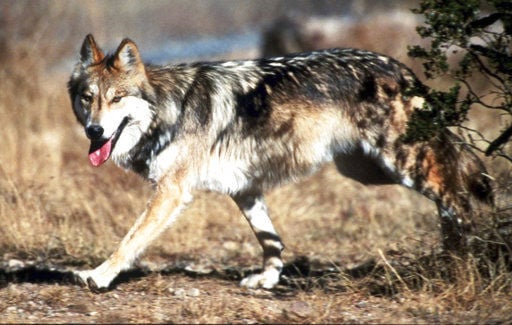A wolf that once roamed parts of the American Southwest and northern Mexico would be removed from the list of federally protected species under legislation proposed by U.S. Sen. Jeff Flake.
The Arizona Republican introduced the measure last week. He's a critic of the Mexican gray wolf recovery plan that was adopted by the U.S. Fish and Wildlife Service in November, calling it a regulatory nightmare for ranchers and rural communities.
"I plan to continue my efforts to push for real recovery that takes into account the needs of the local stakeholders most impacted by this policy," Flake said in a statement Monday.
The legislation calls for the director of the Fish and Wildlife Service to determine if a population of fewer than 100 wolves has been established in the species' historical range along the Arizona-New Mexico border. If so, the predator would be considered recovered and removed from the endangered list.
Management of the wolves would be turned over to state wildlife agencies in Arizona and New Mexico once the Fish and Wildlife Service makes a determination.
An estimated 113 wolves roam parts of Arizona and New Mexico, according to the most recent data. Members of the wolf recovery team will be conducting a new survey in the coming weeks.
There have been unsuccessful legislative efforts in the past to limit protections for the Mexican gray wolf, but environmentalists say Flake's bill is an attempt to sidestep the Endangered Species Act.
"It should be the job of scientists, not politicians, to determine when a species is recovered," said Bryan Bird, the Southwest program director for the Washington, D.C.-based group Defenders of Wildlife.
Environmental groups have pressed for years for more captive wolves to be released into the wild, but ranchers and elected leaders in rural communities have pushed back because the predators sometimes attack domestic livestock and wild game.
In 2016, the U.S. Interior Department's internal watchdog said the Fish and Wildlife Service had not fulfilled its obligation to remove Mexican gray wolves that preyed on pets and cattle.
The new recovery plan, which was adopted following decades of legal challenges and political battles, calls for management eventually to revert to the states but not until the population averages 320 wolves over an eight-year period. In each of the last three years, the population would have to exceed the average to ensure the species doesn't backslide.





